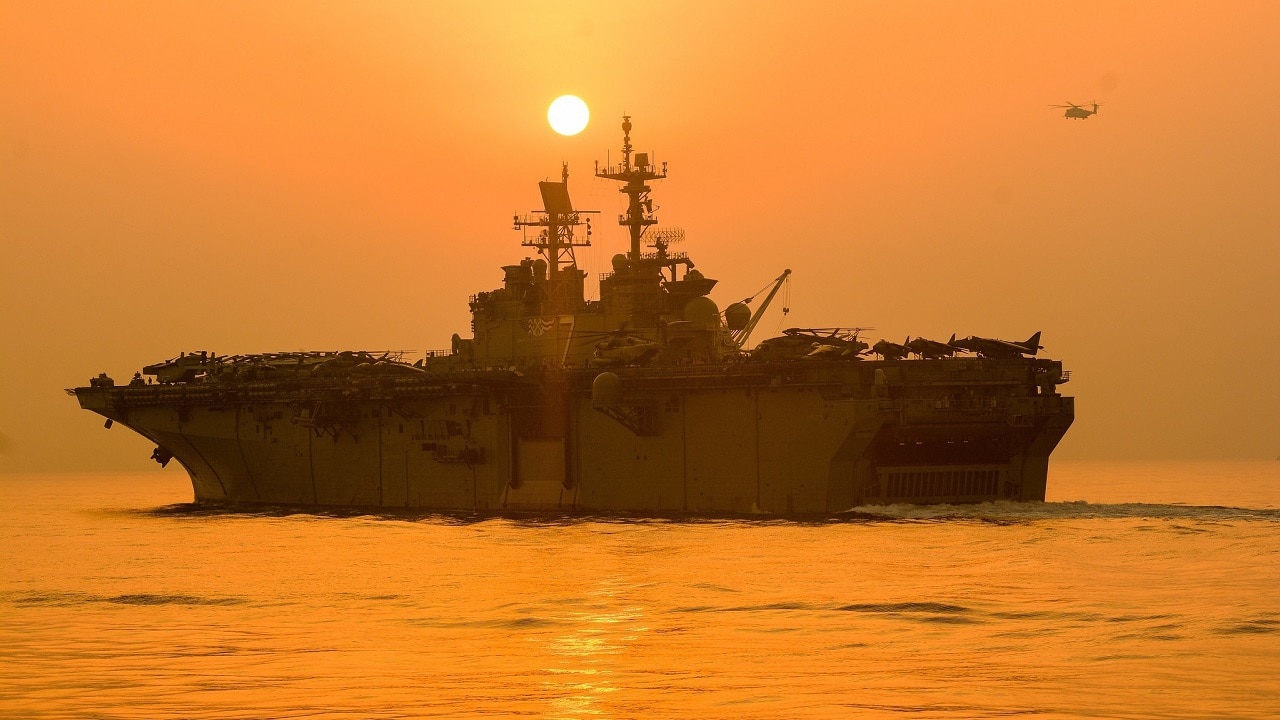On Wednesday, a very small United States Navy vessel made its first voyage through the Strait of Hormuz, the strategically vital waterway in the Middle East. What was notable about this deployment is that the watercraft had no commanding officer onboard and no crew.
Rather it was the L3 Harris Arabian Fox MAST-13 unmanned surface vessel (USV), a 13-meter (41-foot) long speedboat equipped with advanced sensors and cameras. It was escorted by a pair of United States Coast Guard cutters, USCGC Charles Moulthrope and USCGC John Scheuerman.
Strait Through
The trip saw the drone safely pass with the escorts through the strait, the busy waterway between Iran and Oman – which at its narrowest is just 33 kilometers (21 miles) wide – which connects the Persian Gulf to the Gulf of Oman. Approximately one-fifth of the world’s oil trade passes through the Strait of Hormuz.
“I am proud to be a part of this great partnership between the U.S. Coast Guard and Navy in the Middle East. We often work side-by-side as one team with a common mission to provide security and safeguard the seas,” said Lt. Trent Moon, John Scheuerman’s commanding officer, via a DVIDs statement.
The MAST-13 had previously been tested in operations with the UK’s Royal Navy’s NavyX team and the Royal Marines 47 Commando as part of their Autonomous Advance Force (AAF) 2.5 trial in Norway in 2020. It was also employed with the Royal Australian Navy maritime exercise Autonomous Warrior 2022 (AW22) in Abu Dhabi, United Arab Emirates (UAE) last August.
It was also two years ago this month that the United States Navy launched its inaugural multi-domain manned and unmanned capabilities exercise, “Above the Sea, On the Sea and Below the Sea.”
The Navy’s Task Force 59
The U.S. 5th Fleet established a unit called Task Force 59 in September 2021 to integrate unmanned systems and artificial intelligence (AI) into regional maritime operations. Since its launch, the task force has deployed a suite of new unmanned systems from operational hubs in Jordan and Bahrain, the Navy announced.
Last December, Task Force 59 launched its Aerovel Flexrotor unmanned aerial vehicle (UAV) from the USCGC Emlen Tunnell (WPC 1145) while operating in the Arabian Gulf. That launch marked the first Task Force 59 deployment of a UAV from a U.S. Coast Guard vessel at the time.
“We are on the cutting-edge of integrating advanced unmanned technology into our maritime patrols. Our crews are excited to help lead these efforts with our Navy counterparts,” added Lt. Cmdr. Stephen Hills, Charles Moulthrope’s commanding officer.
The MAST-13’s video feeds can transmit images back to shore and ships at sea, which can aid U.S. sailors to see other vessels before approaching them. The U.S. Navy has suggested that such drones could aid in stopping the flow of Iranian weapons to Yemen.
“It puts more eyes out on the water, enabling us to better monitor what is happening,” Hawkins added
Middle East Showdown?
The passage of the Coast Guard cutters and MAST-13 drone did catch the attention of Iran’s Revolutionary Guard but took place without incident.
“The Iranians observed the unmanned surface vessel transiting the strait in accordance with international law,” Navy spokesman Cmdr. Timothy Hawkins told The Associated Press on Wednesday, adding that an Iranian drone and at least one Houdong-class fast-attack vessel operated by the paramilitary Revolutionary Guard observed the MAST-13 drone.
The U.S. Navy’s Bahrain-based 5th Fleet conducts regular patrols of the waters of the Middle East including the Persian Gulf as part of an effort to protect international trade and American interests. However, the Islamic Republic takes another view – and has compared it to its forces running patrols in the Gulf of Mexico.
MORE: ‘Americans Will Pay The Price’: One Democrat Is Angry At Joe Biden
MORE: Could Joe Biden Get Impeached?
Author Experience and Expertise:
A Senior Editor for 19FortyFive, Peter Suciu is a Michigan-based writer. He has contributed to more than four dozen magazines, newspapers, and websites with over 3,200 published pieces over a twenty-year career in journalism. He regularly writes about military hardware, firearms history, cybersecurity, politics, and international affairs. Peter is also a Contributing Writer for Forbes and Clearance Jobs. You can follow him on Twitter: @PeterSuciu.

